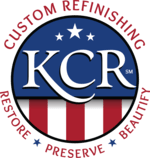The holiday season brings a festive atmosphere to many workplaces, but the relaxed attitude can create unique challenges in terms of facility security. Below are some tips to help you keep your workplace safe—during the holidays and all year long.
 Devise and implement appropriate building security and visitor procedures. These typically include some combination of locked doors, badge access, the signing in and out of visitors, the escorting of visitors to and from their destinations, and policies prohibiting the propping open of doors that should be kept closed and locked. The exact needs vary with the facility and industry. A small pharmaceutical company with drugs on the premises will likely require tighter physical security controls than a small accounting firm.
Devise and implement appropriate building security and visitor procedures. These typically include some combination of locked doors, badge access, the signing in and out of visitors, the escorting of visitors to and from their destinations, and policies prohibiting the propping open of doors that should be kept closed and locked. The exact needs vary with the facility and industry. A small pharmaceutical company with drugs on the premises will likely require tighter physical security controls than a small accounting firm.
- Devise and implement appropriate evacuation procedures and diagrams. Create different evacuation plans for fires (and similar dangers) and for incidents of workplace violence. The two situations have very different profiles and requirements. If you lack the in-house expertise needed to devise such plans, consult your local first responders for help. (You might also ask them for guidance on how the staff can best work with them if and when they are called to the facility in an emergency.)
- Ensure that all staff members understand and follow the procedures for visitor access. These might include escorting authorized visitors to and from building entrances or preventing strangers from “tailgating” after you when passing through a badge-controlled door. (Yes, this might make you feel like the Grinch. No, it will not harm you or the average, well-meaning visitor—but it might prevent an unauthorized person from gaining access and causing problems.)
- Encourage your staff to take a proactive attitude toward unescorted visitors who are not familiar to them. Staff should be encouraged to politely ask unescorted visitors such questions as “Can I help you?” and “Do you need anything?” This is especially important when such people seem lost or out of place. Such questions have a way of uncovering and discouraging ill-meaning people, who are generally wary of being noticed and addressed.
- Make sure that critical equipment and files are kept behind locked doors. The ideal place for private employee and customer data is in locked cabinets inside locked rooms. These barriers should always be closed and locked, not merely capable of being locked.
- Devise and enforce a policy regarding the carrying of weapons into the facility. This should be appropriate to your state, your organizational culture, and the service or products you provide.
- Incorporate workplace violence prevention training into your overall employee training. This should be a regular aspect of the training of new hires.
- Devise and implement policies for handling people who are physically and emotionally out of control. This refers to people who are upset, visibly emotional, and so on. They might be throwing things or running around uncontrollably. Such people can lack a conscious aggressive intent but still be a danger to themselves, others, and the facility.
- Think like a bad guy. Take some time to imagine that you are an outsider who wishes to gain unauthorized access to your facility. Could you do it? How? In other words, identify the weak points in your facility security program—and then see how those can be hardened.
